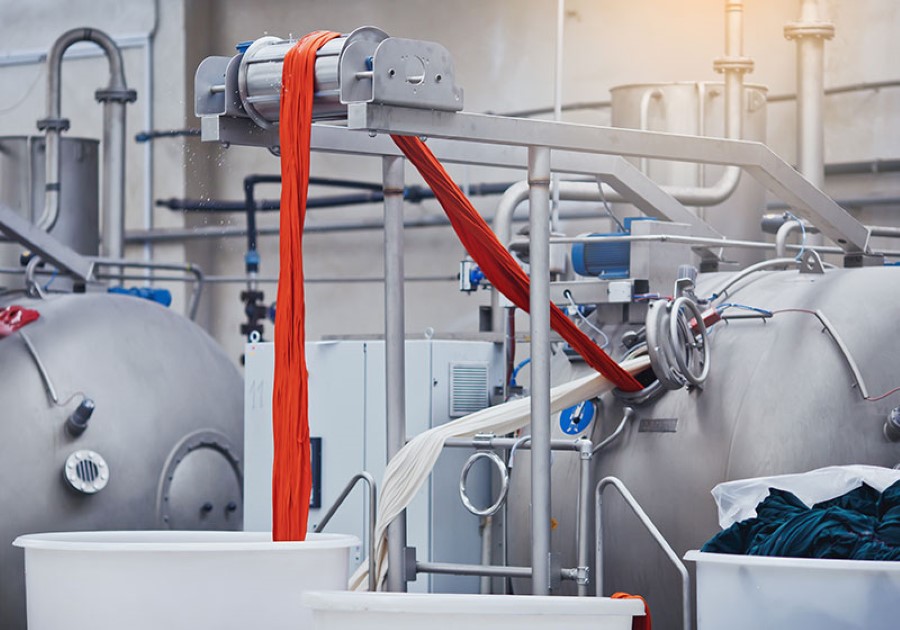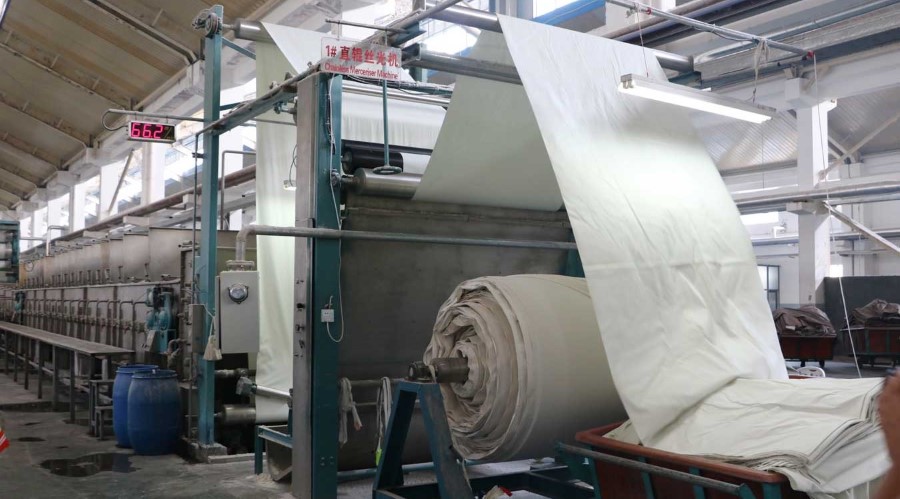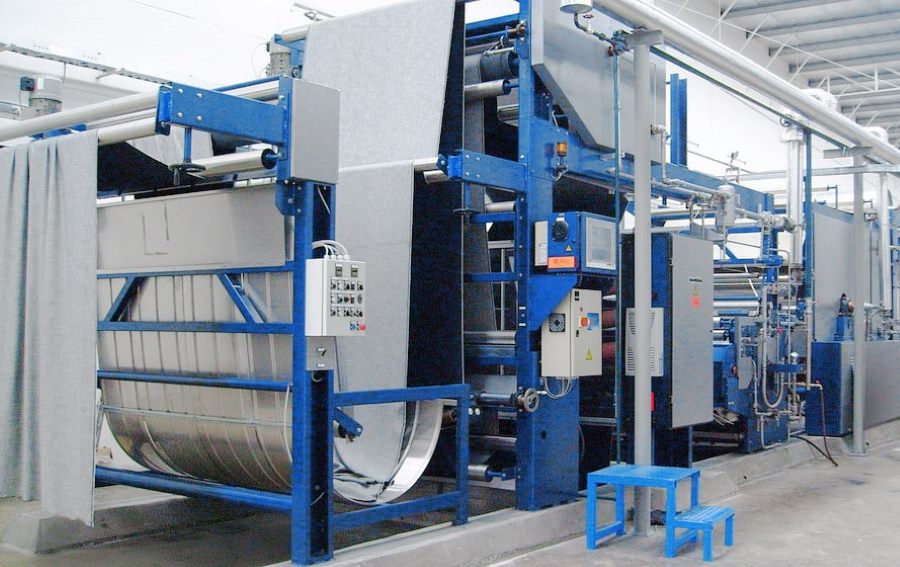Garment Finishing Processes: The Final Touches

Table of Contents
ToggleGarment finishing is the crucial stage in the manufacturing process that transforms raw fabric into wearable clothing. It involves a series of treatments that enhance the garment’s appearance, feel, and performance. Let’s explore some of the most common finishing processes used in the textile industry:
Pre-Finishing Treatments: Preparing the Fabric for Finishing
Pre-finishing treatments are essential steps in the garment manufacturing process, laying the foundation for subsequent finishing operations. These treatments ensure that the fabric is clean, uniform, and ready to receive the desired finishes.
Desizing
Desizing involves removing the sizing agents applied to yarn during weaving or knitting. These sizing agents help to improve the yarn’s strength, elasticity, and processability. However, they must be removed before finishing to ensure proper dye uptake and prevent fabric defects. The desizing process typically involves treating the fabric with enzymes or chemicals that break down the sizing agents.

Scouring
Scouring is a thorough cleaning process that removes impurities like dirt, oils, waxes, and other contaminants from the fabric. These impurities can interfere with dyeing, printing, and other finishing processes, leading to uneven results. Scouring is usually done using hot water and a combination of detergents and alkali agents.
Bleaching
Bleaching is a process used to whiten fabrics or remove unwanted colors. It involves treating the fabric with a bleaching agent, such as sodium hypochlorite or hydrogen peroxide. Bleaching can be used to create a bright white base for dyeing, or to remove color from fabrics that need to be dyed a different shade.
Mercerizing
Mercerizing is a chemical treatment that improves the luster, strength, and dye affinity of cotton fabrics. It involves treating the fabric with a concentrated sodium hydroxide solution under tension. This process causes the cotton fibers to swell and become more uniform. Mercerized cotton is known for its silky luster, increased strength, and improved dye uptake.

Additional Considerations:
- Desizing and Scouring: In some cases, desizing and scouring can be combined into a single process, especially for fabrics with low levels of sizing agents.
- Bleaching Agents: The choice of bleaching agent depends on the fabric type, desired whiteness, and environmental considerations.
- Mercerizing Conditions: The concentration of sodium hydroxide, temperature, and tension used in mercerizing can affect the final properties of the fabric.
By understanding the pre-finishing treatments and their importance, manufacturers can ensure that their fabrics are properly prepared for subsequent finishing processes, resulting in high-quality garments.
Mechanical Finishing: Shaping and Texturing Fabrics
Mechanical finishing techniques utilize physical processes to alter the appearance and texture of fabrics without changing their chemical composition. These methods are essential for creating a wide range of fabric finishes, from smooth and lustrous to textured and embossed.
Calendering
Calendering involves passing the fabric between heated rollers to smooth, flatten, and compact it. The rollers can be arranged in various configurations, including a single roller, a pair of rollers, or multiple rollers. The heat and pressure applied during calendering can also be adjusted to achieve different finishes. Calendering is commonly used to:
- Improve fabric smoothness: Reduce wrinkles and creases.
- Enhance fabric luster: Give the fabric a shiny appearance.
- Compact the fabric: Make it denser and less bulky.
- Prepare the fabric for subsequent finishing processes: For example, calendering can be used to smooth the surface of fabrics before printing or embossing.

Embossing
Embossing creates patterns or designs on the fabric by pressing it between engraved rollers. The rollers have raised or indented patterns that are transferred to the fabric. Embossing can be used to add texture, depth, and visual interest to fabrics. It is commonly used for:
- Creating decorative patterns: For example, floral, geometric, or abstract designs.
- Improving fabric performance: Embossing can be used to create textures that enhance the fabric’s breathability, moisture-wicking properties, or insulation.
- Adding dimension to fabrics: Embossed fabrics can appear thicker and more substantial than plain fabrics.
Sanforizing
Sanforizing is a pre-shrinking process that prevents fabrics from shrinking after washing or wearing. It involves treating the fabric with a chemical solution that causes it to shrink under controlled conditions. Once the fabric has shrunk, it is stretched to its original dimensions. Sanforizing is commonly used for:
- Preventing fabric shrinkage: Ensuring that garments maintain their shape and fit.
- Improving fabric quality: Sanforized fabrics are generally more durable and less likely to develop wrinkles or creases.
- Meeting industry standards: Many clothing manufacturers require fabrics to be sanforized before they can be used in garments.

Starching
Starching involves treating the fabric with a starch solution to add stiffness, body, and crispness. Starch can also help to improve the fabric’s drape and crease resistance. Starching is commonly used for:
- Creating a crisp, formal look: For example, in shirts, collars, and cuffs.
- Improving fabric body: Making fabrics feel thicker and more substantial.
- Reducing wrinkles: Starching can help to prevent fabrics from wrinkling.
Brushing
Brushing is a process that raises the pile of fabrics like flannel or corduroy. It involves using a brush with fine bristles to lift the fibers and create a soft, fuzzy surface. Brushing can be used to:
- Enhance fabric texture: Create a soft and cozy feel.
- Improve fabric warmth: Brushing can increase the insulating properties of fabrics.
- Add visual interest: Brushed fabrics can have a more textured and interesting appearance than plain fabrics.
By understanding these mechanical finishing techniques, manufacturers can create a wide variety of fabric finishes that meet the needs of different markets and consumers.
Chemical Finishing: Enhancing Fabric Properties
Chemical finishing involves treating fabrics with various chemicals to impart specific properties that are not inherent in the fabric itself. These treatments can significantly enhance the performance, appearance, and functionality of garments.
Dyeing
Dyeing is the process of imparting color to fabrics using various dyes. Dyes are chemical substances that have an affinity for the fabric fibers, allowing them to penetrate and bond with the material. There are many different types of dyes available, including:
- Reactive dyes: React chemically with the fabric fibers to form a permanent bond.
- Disperse dyes: Are suitable for dyeing synthetic fibers like polyester and nylon.
- Acid dyes: Are used for dyeing wool, silk, and nylon.
- Basic dyes: Are used for dyeing cotton and acrylic.
The choice of dye depends on the type of fabric, desired color, and the desired properties of the finished garment.

Printing
Printing involves applying designs or patterns to fabrics using various printing methods. Common printing methods include:
- Screen printing: Involves using a stencil or mesh screen to apply ink to the fabric.
- Digital printing: Uses inkjet technology to print designs directly onto the fabric.
- Rotary screen printing: Uses a rotating cylinder with a perforated pattern to apply ink to the fabric.
- Flexography: Uses flexible printing plates to transfer ink to the fabric.
Printing can be used to create a wide range of designs, from simple logos to complex patterns. It is commonly used for:
- Customizing garments: Creating unique and personalized designs.
- Adding value to fabrics: Enhancing the appearance and appeal of fabrics.
- Creating functional patterns: For example, camouflage patterns or reflective stripes.
Flame Retardancy
Flame-retardant finishes make fabrics resistant to ignition and reduce their flammability. These finishes are often used in clothing for firefighters, industrial workers, and children. Flame-retardant chemicals can be applied to the fabric through various methods, including:
- Padding: Applying a flame-retardant solution to the fabric and then drying it.
- Finishing: Treating the fabric with a flame-retardant chemical during the finishing process.
- Fiber modification: Incorporating flame-retardant properties into the fabric fibers during the manufacturing process.
Water Repellency
Water-repellent finishes treat fabrics to repel water. These finishes can be used to make fabrics waterproof or water-resistant. Water-repellent chemicals can be applied to the fabric through various methods, including:
- Spraying: Applying a water-repellent solution to the fabric as a spray.
- Padding: Applying a water-repellent solution to the fabric and then drying it.
- Finishing: Treating the fabric with a water-repellent chemical during the finishing process.
Antimicrobial Finishing
Antimicrobial finishes prevent the growth of bacteria and fungi on the fabric. These finishes can help to reduce odor, prevent stains, and improve hygiene. Antimicrobial chemicals can be applied to the fabric through various methods, including:
- Padding: Applying an antimicrobial solution to the fabric and then drying it.
- Finishing: Treating the fabric with an antimicrobial chemical during the finishing process.
- Fiber modification: Incorporating antimicrobial properties into the fabric fibers during the manufacturing process.
By understanding the various chemical finishing techniques, manufacturers can create fabrics with a wide range of properties that meet the needs of different markets and consumers.
Finishing Techniques for Specific Fabrics
Different fabrics may require specialized finishing techniques:
Fabric Type | Finishing Techniques |
Cotton | Mercerizing, sanforizing, dyeing, printing |
Wool | Scouring, dyeing, pressing, mothproofing |
Silk | Degumming, dyeing, weighting |
Synthetic Fibers (Polyester, Nylon) | Dyeing, heat setting, wrinkle resistance |
Denim | Sanforizing, stonewashing, distressing |
Finishing Equipment: The Tools of the Trade
Modern garment finishing relies on a diverse range of specialized equipment to perform the various processes involved in transforming raw fabrics into finished garments. These machines are designed to efficiently and effectively apply finishes, ensuring that the final product meets the desired quality standards and meets consumer expectations.
Dyeing Machines
Dyeing machines are used to impart color to fabrics. Some of the most common types of dyeing machines include:
- Jet dyeing machines: These machines use a high-pressure jet of dye solution to penetrate the fabric. They are highly efficient and can process large quantities of fabric quickly.
Jet dyeing machine
- Winch dyeing machines: These machines use a large, rotating cylinder to immerse the fabric in a dye bath. They are often used for dyeing fabrics with complex patterns or irregular shapes.
Winch dyeing machine
- Beck dyeing machines: These machines have a rectangular tank that is filled with a dye bath. The fabric is suspended in the bath and agitated to ensure even dyeing.
Printing Machines
Printing machines are used to apply designs or patterns to fabrics. Some of the most common types of printing machines include:
- Screen printing machines: These machines use a stencil or mesh screen to apply ink to the fabric. The screen is positioned over the fabric, and ink is forced through the screen onto the fabric.
Screen printing machine
- Digital printing machines: These machines use inkjet technology to print designs directly onto the fabric. They offer high-resolution printing and can be used to create complex patterns and designs.
Digital printing machine
- Rotary screen printing machines: These machines use a rotating cylinder with a perforated pattern to apply ink to the fabric. They are highly efficient and can be used to print large quantities of fabric quickly.
Finishing Machines
Finishing machines are used to perform a variety of finishing processes, including:
- Calenders: These machines use heated rollers to smooth, flatten, and compact the fabric. They can also be used to create patterns or designs on the fabric.
Calendering machine
- Embossing machines: These machines use engraved rollers to create patterns or designs on the fabric.
- Stenters: These machines are used to stretch and dry fabrics. They are often used in conjunction with other finishing processes, such as dyeing or printing.
- Brushing machines: These machines use brushes to raise the pile of fabrics like flannel or corduroy.
- Sanforizing machines: These machines are used to pre-shrink fabrics to prevent them from shrinking after washing or wearing.
In addition to these machines, garment finishing also involves a variety of other equipment, such as inspection machines, packaging machines, and material handling equipment. The choice of equipment depends on the specific finishing processes being performed, the type of fabric being processed, and the desired quality standards.
- Facebook
- Twitter
- Linkedin
- Whatsapp





